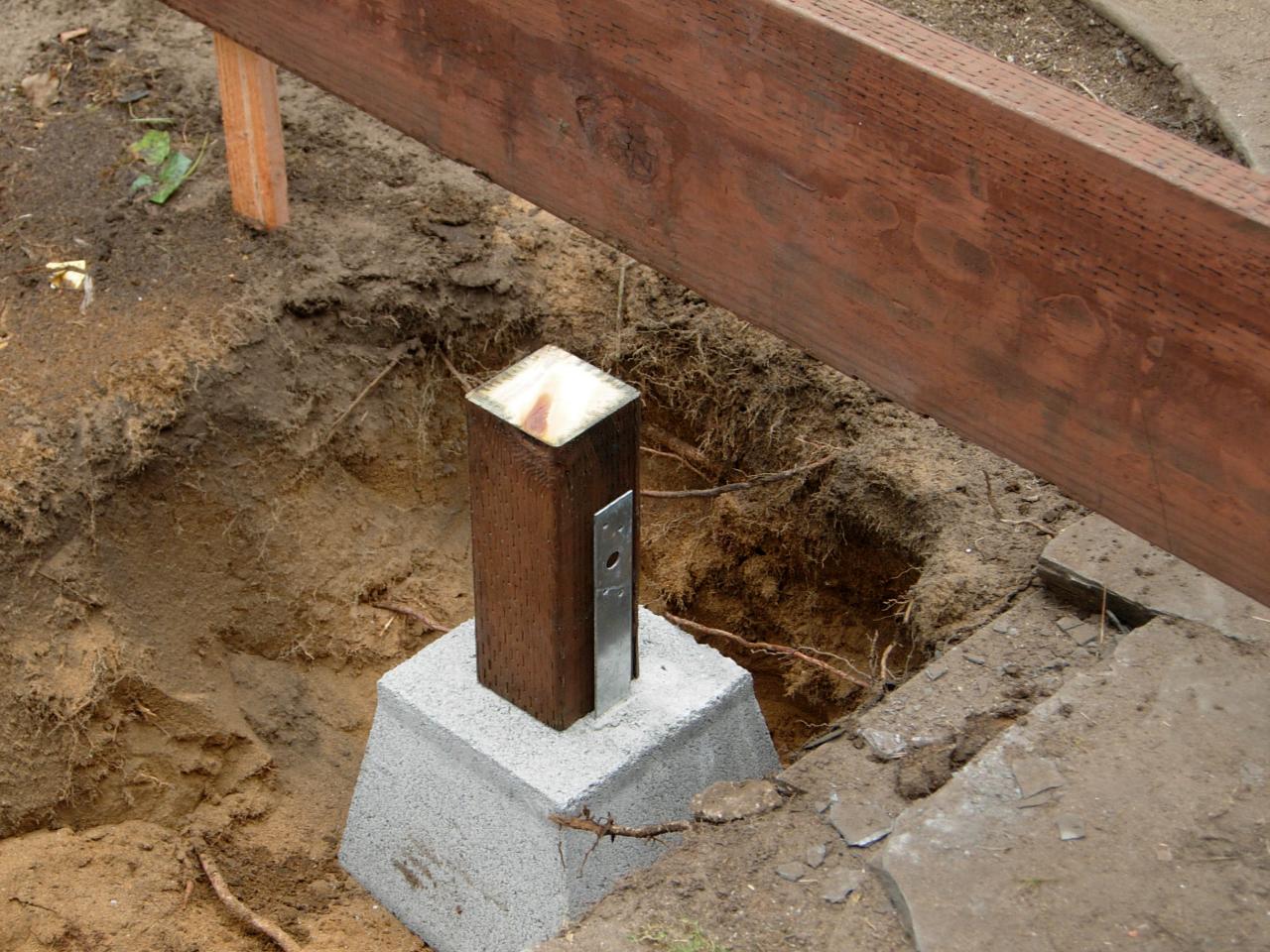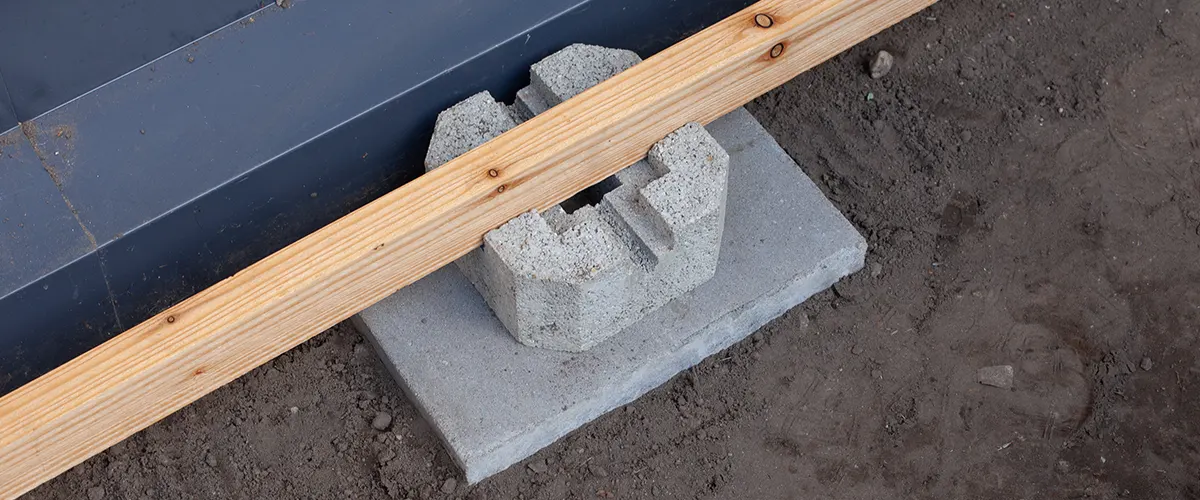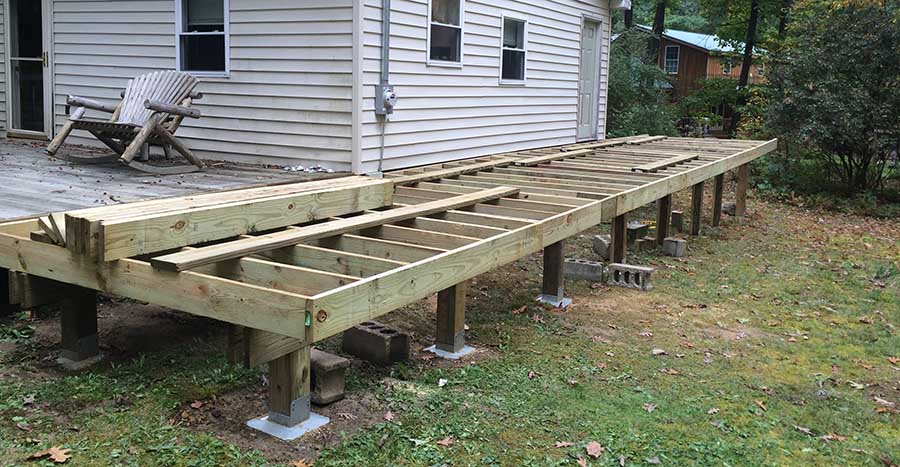A Solid Foundation for Your Oasis: Exploring the Relevance of Deck Footings in Outdoor Structures
Wiki Article
Professional Tips for Setting Up Deck Footings to Support Your Outdoor Area
When it comes to constructing a deck, one of the most crucial components to take into consideration is the setup of proper footings. These grounds are the foundation upon which your exterior room will rest, supplying stability and assistance for years to come. What precisely does it take to mount deck grounds correctly?Significance of Appropriate Deck Footings
Appropriate deck grounds are important for making certain the security and long life of your outside area. When creating a deck, it is crucial to take note of the structure on which it will relax. Deck grounds provide the needed assistance for the entire structure and aid disperse the weight uniformly - Deck Footings. Without solid and properly set up grounds, your deck might end up being unsteady, leading to safety hazards and pricey repair work.
Along with stability, proper deck footings likewise add to the longevity of your outside area (Deck Footings). Grounds that are made and built to withstand the aspects and dirt problems in your location will help stop the deck from settling or changing with time. By ensuring the footings are correctly sized and mounted, you can minimize the threat of damages to the deck framework, extending its life-span and minimizing the requirement for costly repair services or replacements

Picking the Right Type of Grounds
When picking the ideal kind of grounds for your deck, it is necessary to consider elements such as dirt problems, regional building codes, and the overall style of your outdoor room. The kind of footing you choose will play a vital role in guaranteeing the stability and longevity of your deck.One common type of footing is the concrete ground. Concrete grounds are ideal for the majority of dirt problems and offer superb assistance for decks.
In many cases, you might require to make use of customized grounds, such as pile footings or deep foundations, if you are building a huge or multi-level deck. These grounds are designed to disperse the weight of the deck over a bigger location, ensuring security and protecting against sinking or working out.
Before choosing a kind of ground, it is important to seek advice from local building ordinance and laws to make sure conformity. In addition, think about the layout and meant use your outdoor room. Factors such as the size, form, and load-bearing needs of your deck will certainly influence the type of footing that is most appropriate.
Preparing the Ground for Footing Setup
To properly prepare the ground for footing installment, it is very important to examine the soil conditions and take necessary steps to make sure security and sturdiness of the deck. The very first step is to dig deep into the area where the grounds will be set up. The deepness of the excavation will certainly depend upon the frost line in your area and the specific needs of the deck layout. It is crucial to moved here eliminate any kind of plants, rocks, or particles from the excavation to ensure a strong structure.When the area has actually been dug deep into, the next step is to portable the soil. This can be done making use of a plate compactor or by using a hand tamper. Condensing the soil helps to eliminate any gaps or air pockets, which can cause settling and instability over time.
After condensing the soil, it is essential to lay a layer of gravel or crushed rock at the base of the excavation. This will give drain and help to avoid water from pooling around the footings, which can result in disintegration and instability.
Step-by-Step Guide to Setting Up Deck Footings
After appropriately preparing the ground for footing setup, the next action is to begin the process of setting up deck grounds. This step-by-step overview will certainly provide you with a clear understanding of just how to set up deck footings for your exterior area.Identify the location: Start by marking the settings of the deck grounds using risks and string. Ensure that the locations line up with the design and layout of your deck.
Dig the holes: Utilize a post opening miner or an auger to dig the holes for the grounds. The depth and size of the openings should be in conformity with local building regulations and the certain requirements of your deck design.
Degree the openings: Make use of a degree to guarantee that the holes are dug to the appropriate depth and are degree with each other. (Deck Footings)
Include gravel: Place a layer of crushed rock at the base of each hole to enhance drainage and stop the wood from decaying.
Put the footings: Position the grounds right into the holes, ensuring they are degree and plumb. Make use of a degree and a gauging tape to make sure accuracy.
Safeguard the footings: Put concrete right into the holes around the grounds, filling them to the top. Use a post degree to make sure the grounds stay level as the concrete sets.
Allow time for see this site treating: Let the concrete remedy according to the producer's guidelines prior to proceeding with the deck building and construction.
Usual Blunders to Stay Clear Of During Footing Setup
One important facet to think about throughout the setup of deck footings is preventing usual errors that can jeopardize the stability and longevity of your outside room. While deck grounds may appear like a straightforward and uncomplicated part of the construction procedure, overlooking certain factors can bring about expensive fixings and possible safety and security risks down the line.
In addition, ignoring to set up correct water drainage actions can create water to build up around the footings, causing rot, decay, and the ultimate weakening of the deck's structure. Making use of the incorrect kind of footing product or falling short to effectively safeguard the grounds can endanger their architectural honesty.
To avoid these errors, it why not try here is important to speak with a professional or comply with industry guidelines to make sure appropriate footing setup. By doing so, you can make sure the security and durability of your outside space, offering a risk-free and enjoyable setting for many years to find.
Final Thought
Finally, mounting appropriate deck grounds is important for the security and long life of your outside area. By selecting the ideal kind of grounds and properly preparing the ground, you can guarantee a solid structure for your deck. Following a step-by-step guide and staying clear of typical errors throughout footing installation will better enhance the toughness and safety of your deck.Correct deck footings are vital for ensuring the stability and long life of your outdoor space. The footings serve as a link in between the ground and the deck, allowing the weight of the deck and its occupants to be spread equally into the soil.One typical type of footing is the concrete ground. Insert the grounds: Place the footings into the openings, making certain they are level and plumb. Protect the footings: Pour concrete into the holes around the footings, loading them to the top.
Report this wiki page